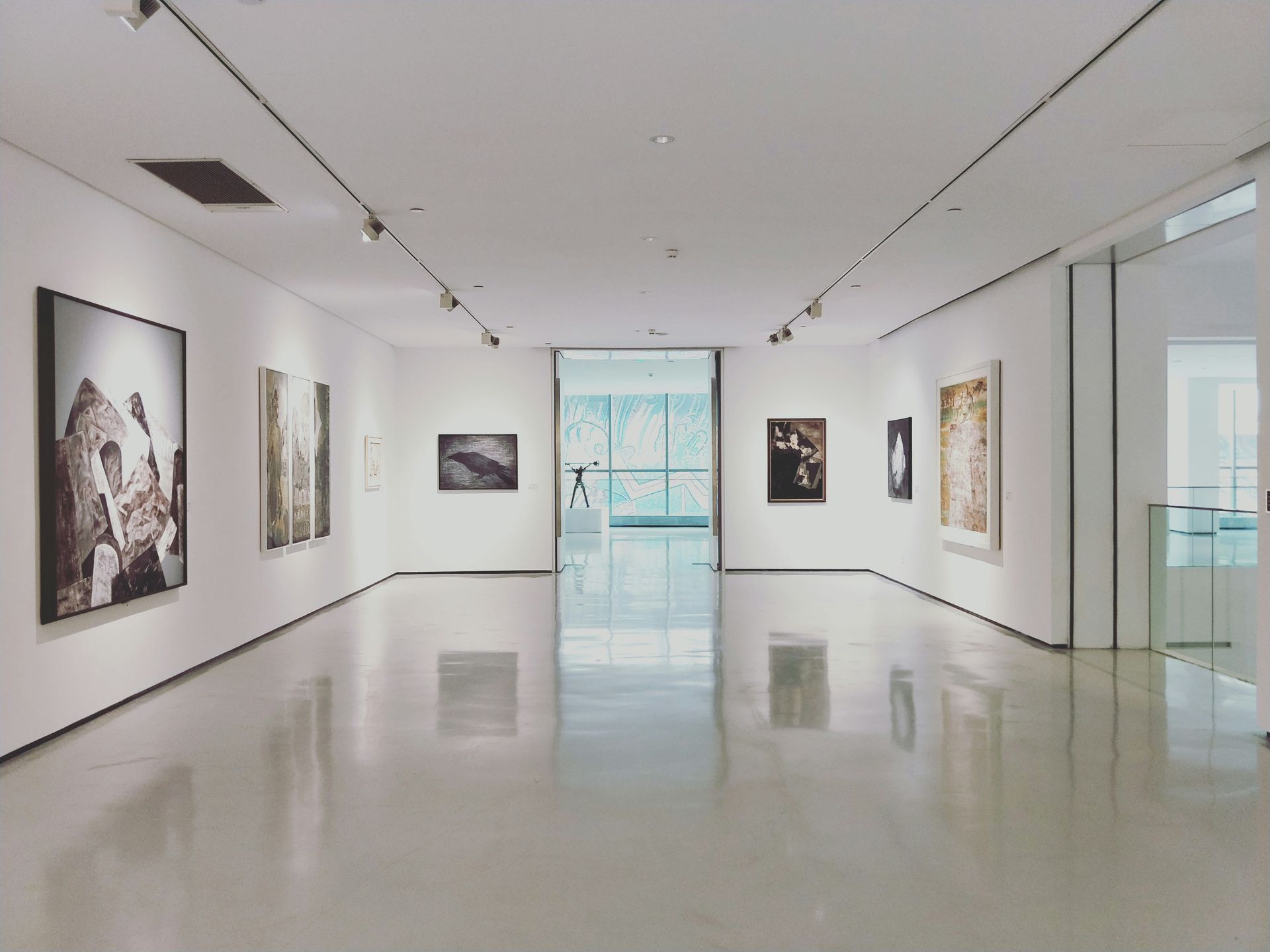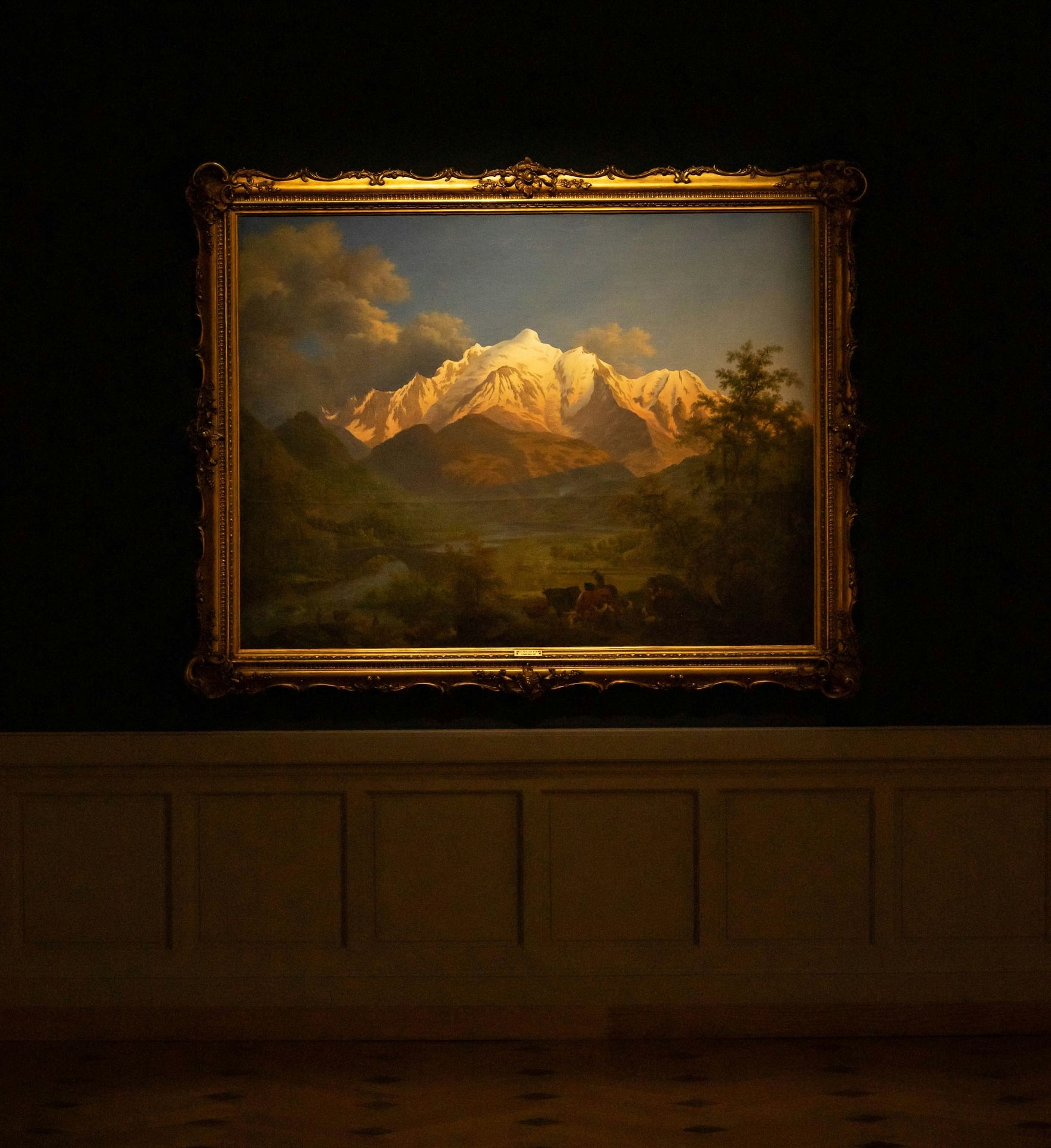Designing Lighting for an Art Museum: A Focus on Paintings and Sculptures
Lighting design in an art museum is critical for enhancing the visibility and vibrancy of artworks, creating a contemplative atmosphere for visitors, and ensuring the preservation of the art. Here, we’ll explore how to design lighting for a museum displaying paintings and sculptures in a large open space with a medium ceiling height, and how Hublit can provide tailored solutions.
Understanding the Space and Artworks
An art museum with large open spaces and medium-height ceilings presents distinct challenges and opportunities for lighting design. Paintings require controlled, glare-free illumination to preserve color accuracy and texture, while sculptures benefit from dynamic lighting that emphasizes their three-dimensional forms.

Addressing Conservation Concerns
Artworks, especially paintings, are sensitive to light exposure. Over time, excessive light—particularly UV and infrared radiation—can cause fading and deterioration. Lighting must therefore balance visibility with preservation. This is where LED lighting becomes invaluable. Hublit’s LED fixtures are designed with minimal UV and infrared emissions, ensuring artwork safety without compromising on quality.

Creating a Contemplative Visitor Experience
The atmosphere of an art museum should encourage reflection and engagement. To achieve this, layered lighting—a combination of ambient, accent, and task lighting—is essential. Ambient lighting creates a general soft glow, while accent lighting highlights individual pieces, drawing visitors' attention to specific details. Task lighting may also be used in interactive exhibits or signage areas.
Hublit’s architectural lighting solutions include customizable ambient and accent lighting options that seamlessly blend with museum aesthetics while enhancing the overall visitor experience.

Technological Integration
Modern museums benefit greatly from integrating advanced lighting technologies. Smart lighting controls allow for dynamic adjustments based on time of day, visitor presence, or specific exhibition requirements. Hublit’s lighting automation products can integrate with systems like DALI and KNX, offering museums complete control over their lighting environment, from adjusting brightness and color temperature to scheduling specific scenes.
Prioritizing Sustainability
Sustainability is a key concern for many museums today. Energy-efficient solutions not only reduce operational costs but also align with environmentally responsible practices. Hublit’s energy-efficient LED lights, combined with motion and daylight sensors, significantly reduce energy consumption while maintaining optimal lighting conditions.
Practical Applications of Lighting Design
- Paintings: Use track lighting or wall-mounted fixtures with adjustable beams to focus light precisely on paintings. Hublit’s advanced lighting solutions offer precision control, ensuring even illumination without glare or hotspots.
- Sculptures: Illuminate sculptures from multiple angles using a combination of overhead and side lighting. This highlights textures and shadows, creating a dramatic effect. Hublit’s flexible spotlights and dimmable fixtures allow curators to tailor the lighting for each piece.
- General Spaces: For large open spaces, recessed or hidden lighting integrated into ceilings or walls provides a clean, minimalist look while evenly distributing light. Hublit specializes in recessed lighting solutions that enhance architectural features without being intrusive.
Maintenance and Durability
Art museums require lighting solutions that are both durable and low-maintenance. Frequent replacements or adjustments can be disruptive to exhibits. Hublit’s high-quality, long-lasting LED fixtures are designed to minimize maintenance efforts, allowing museums to focus on their collections and visitors.
Future-Proofing Lighting Design
Museums are dynamic spaces that frequently change exhibitions. Lighting systems should be adaptable to new layouts and themes. Hublit’s modular lighting systems and adjustable fixtures provide the flexibility needed to reconfigure lighting as exhibits evolve.
How Hublit Can Help
Hublit offers a comprehensive range of architectural and lighting automation solutions tailored to the needs of art museums:
- LED Technology: Flicker-free, UV-safe LED lights that preserve artworks while providing exceptional clarity.
- Customizable Solutions: Lighting fixtures that can be tailored to fit the unique requirements of paintings and sculptures.
- Energy Efficiency: Advanced lighting systems with energy-saving features like motion sensors and automated dimming.
- Smart Lighting Controls: Integration with home and building automation systems, enabling museums to create dynamic and interactive lighting environments.
- Expert Consultation: Hublit’s team works closely with museum curators and architects to design lighting systems that align with the artistic vision and functional needs of the space.
Conclusion
Designing lighting for an art museum involves balancing aesthetics, functionality, and preservation. By employing advanced technologies and thoughtful design strategies, museums can create visually stunning and sustainable environments that enhance both the art and the visitor experience.
With Hublit’s expertise in architectural lighting and automation, museums can achieve unparalleled lighting quality, ensuring that their collections shine in the best possible light while safeguarding them for future generations. Contact us today to explore how we can bring your museum lighting vision to life.